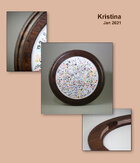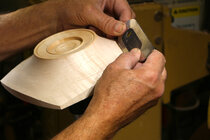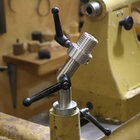Basic question, but as I start working on end grain hollow vessels curious when to use a face plate versus chuck. Since it’s end grain, I’ve always been told it won’t hold screws well, and yet it seems they are used quite often for the larger vessels. I’ve tended to turn side grain, even in vessels, or segmented, and have been comfortable with chucks in those applications with rare exception. Related questions are how to determine the right size face plate and what size screws to use?
While basic questions, I’ve realized they’re important (at least to me) to be as safe as I can.
Thanks,
John
While basic questions, I’ve realized they’re important (at least to me) to be as safe as I can.
Thanks,
John





